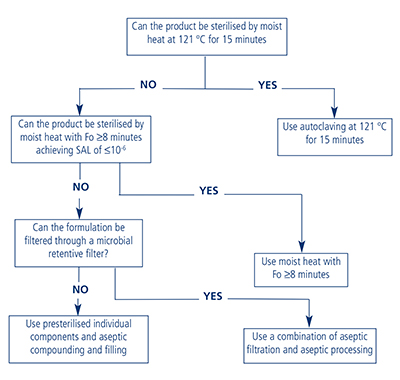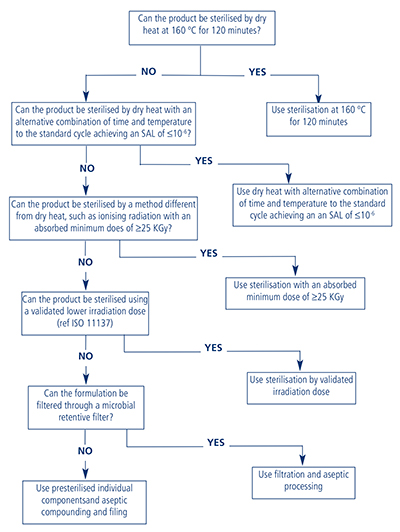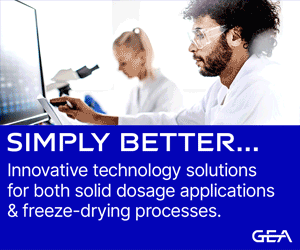They are required, like any pharmaceutical dosage form, to meet the quality standards described in pharmacopeias and to be safe for their intended purpose. In addition to being sterile, parenteral preparations must be pyrogen-free.
Sterility can be achieved using a number of formulation-appropriate sterilisation techniques, whereas, if no depyrogenation process is used during the preparation of the sterile drug products, the use of pyrogen-free pharmaceutical ingredients, drug substances or active pharmaceutical ingredients (APIs) and excipients will be required.
They are usually supplied in single-dose glass or plastic containers or, more frequently, in prefilled syringes or pens to facilitate ease of use.
This article will describe the main challenges encountered during the formulation of parenteral preparations.
Properties of parenteral preparations
Parenteral preparations are designed to be administrated to humans or animals by direct injection (intravenous [IV], intramuscular [IM] or subcutaneous [SC] bolus), by controlled infusion or by direct IM or SC implantation. They must meet the following minimum compendial criteria
- be sterile and pyrogen-free
- be clear or practically exempt from visible particles and be free from subvisible particles as required by EP, USP and JP
- show no evidence of phase separation (emulsions) or aggregate formation (aqueous dispersions such as injectable monoclonal antibody [mAb] preparations).
- with suspensions, the use of an appropriate particle size such that any sediment should readily disperse after shaking to provide a stable formulation and ensure the correct dose can be withdrawn and injected is paramount.
Parenteral preparations may require the use of biocompatible excipients that are selected according to the specific application and included at the minimum efficient concentration. The functionality of these excipients is as follows:
- to make the preparation isotonic with respect to blood (glucose/dextrose, mannitol, sodium chloride)
- to adjust the pH to physiological levels (mineral or organic acids or salts)
- to prevent the degradation of the drug substances (stabiliser)
- to ensure or increase the drug substance’s solubility
- to provide adequate antimicrobial preservation (only applicable to multidose preparations).
It must be stressed that excipients should not adversely affect the intended medicinal action of the drug product, nor at the concentration used cause toxicity or undue local irritation.
Formulation challenges

Figure 1: Decision tree for aqueous product sterilisation (CPMP/QWP/054/98)
The main challenge with parenteral dosage forms is achieving drug substance and excipient compatibility (that is, eliminating the formation of impurities by degradation of the drug substance or the formation of a new chemical entity between the drug substance and the excipients) as well as avoiding leaching/adsorption issues between the preparation and the primary container.
With regards to solutions and emulsions, the drug substances should be soluble and remain soluble during the entire shelf-life of the drug product. When drug substances are poorly soluble, dissolution can be achieved using either co-solvents, surfactants or a soluble pro-drug, or a solubility enhancer such as a cyclodextrin, which will form an inclusion complex.
The pH value is one of the critical aspects of parenteral preparations, which should be as close to physiological levels as possible. In certain instances, however, a compromise may need to be found between ensuring stability of the drug substance (such as for peptides that need an alkaline pH or proteins that require a pH close to their isoelectric point) and the physiological pH.
In all situations, large volume preparations (LVPs), defined as greater than 100 mL, should not contain a pH buffer; blood provides a buffer effect that could compete with the injected drug product.
The stability of the drug substance is another critical issue that formulators face during drug development. Unstable drug substances will lead to the formation of impurities that jeopardise the safe use of the preparation.
When the use of a stabiliser is justified (such as using mannitol as a free-radical scavenger or cysteine in a paracetamol solution for injection), it should be included at the minimum concentration demonstrated to be efficient at release and during the entire shelf-life.

Figure 2: Decision tree for non-aqueous liquid, semi-solid or dry powder product sterilisation (CPMP/QWP/054/98)
With powders for injection or infusions derived from a freeze-drying process, the use of a bulking agent (such as mannitol) and/or a cryoprotector may be needed if the drug substance(s) alone is/are unable to form an acceptable “cake.”
Finally, the sterilisation process should be selected according to the characteristics of the parenteral preparation (steam sterilisation for aqueous solutions and dry heat for non-aqueous solutions) and the nature of the primary container.
Figures 1 and 2 show decision trees for the selection of the appropriate sterilisation process for aqueous products or non-aqueous solutions, including semi-solid and dry powder products. The efficiency of the sterilisation process should be demonstrated through validation studies, using appropriate biological indicators, to ensure an ASL (Assurance Sterility level) of 10-6.
Roquette’s solutions
Roquette has developed a pyrogen-free range of biocompatible, pharmaceutical-grade products for the manufacture of parenteral preparations. LYCADEX PF (pyrogen-free dextrose/glucose monohydrate) can be used as source of carbohydrates in LVPs, small volume preparations (SVPs) and parenteral nutrition (TPN), as well as an osmotic agent for dialysis solutions. PEARLITOL PF (pyrogen-free mannitol) can be used in LVPs and SVPs as an API and isotonic agent, as well as a bulking agent for freeze-dried injectable powders.
NEOSORB PF (pyrogen-free sorbitol) can also be used as a source of carbohydrates in LVPs and SVPs, as well as an osmotic agent in sterile irrigating fluids, and parenteral-grade KLEPTOSE HPB/HP (pyrogen-free hydroxypropyl betacyclodextrin) are widely used to enhance the solubility and stability of APIs, as well as improve clinical tolerance. Sodium gluconate is usually used as a source of biological organic salts and as a pH regulator.
All these pyrogen-free products are obtained from natural and renewable raw materials. Besides being compliant with pharmacopoeias and other ICH quality requirements (such as ICHQ3D for elemental impurities), they are also certified by competent authorities (ANSM, the French Competent Authority and US FDA), even when used as excipients, and are manufactured according to GMP and ICHQ7 requirements.
Conclusion
Parenteral preparations are sterile and pyrogen-free preparations that are designed to be administered directly into the systemic circulation of humans or animals. They should meet the pharmaceutical quality standards described in various pharmacopoeias and ICH guidelines, ensure clinical tolerance and be safe for their intended purpose of use.
Thanks to its know-how and experience gained by serving the injectable and dialysis markets for decades, Roquette has developed a range of pyrogen-free products that meet all the required pharmaceutical standards and are GMP/ICH Q7-certified, whether used as APIs or excipients.




